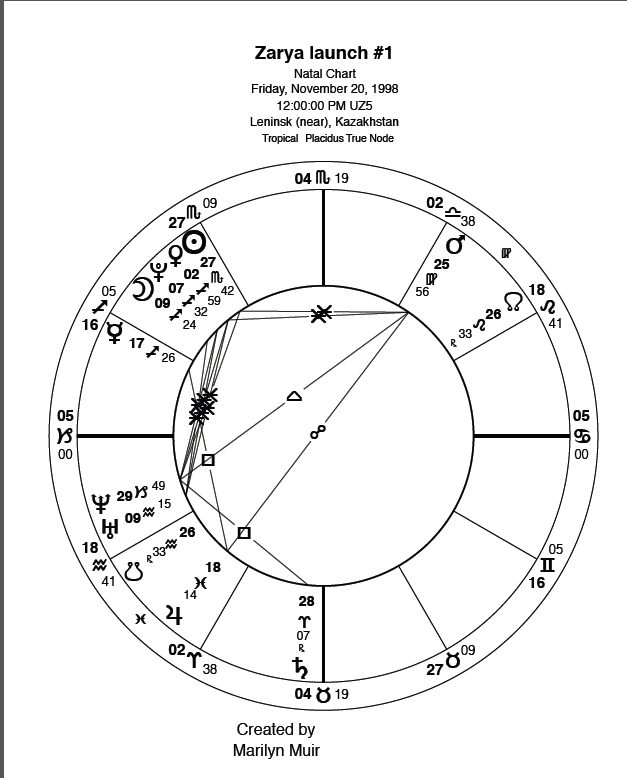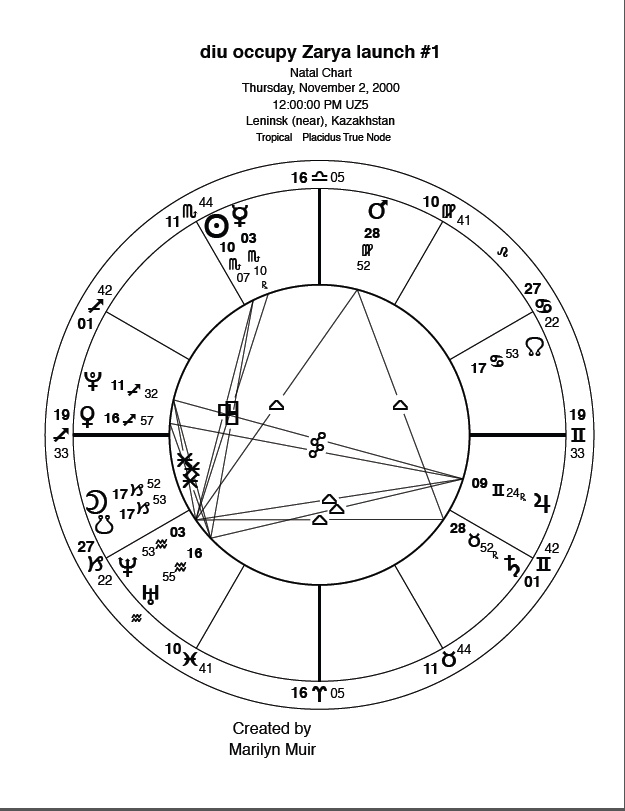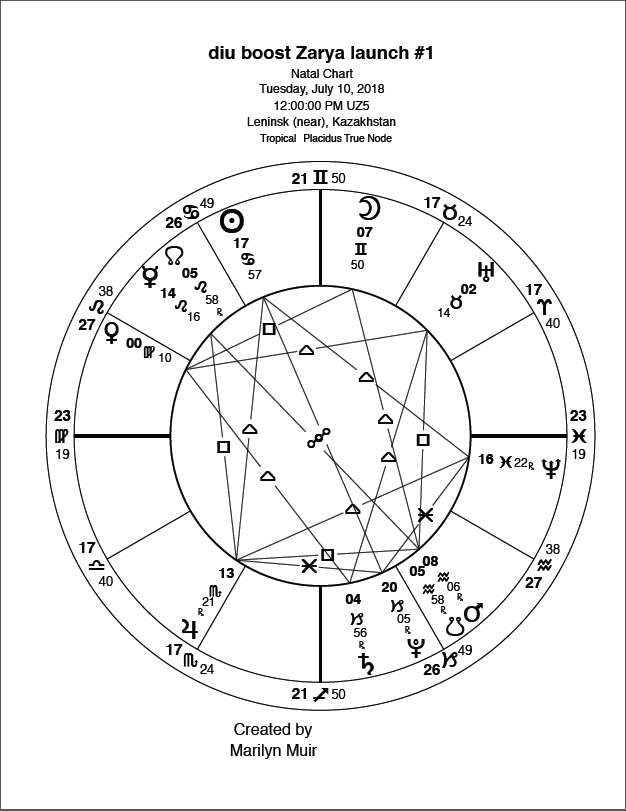by Marilyn J. Muir, LPMAFA

This work is licensed under a Creative Commons Attribution-NonCommercial-ShareAlike 4.0 International License.
If we are paying attention, sometimes history will walk right up to us and smack us on the head to remind us that we got to here by being there. That happened for me this week as I read about the return of the space rocket/vehicle supply and equipment run to the International Space Station. Most of this supply duty is done by Russian heavy-lift rocketry, but this leg happened to go to the U.S. and provided an opportunity to test out our capability of giving an orbital boost and stabilization to the Space Station itself. More on why/how and its effectiveness in the boost section of this article.
The article that I read made me wonder if we could see the current boost (one of many) as an activation to the original launch chart. What an incredible read that story was. Goosebumps! Obviously, you can get a lot of info from NASA, but the internet library has scads of stuff. While reading, I realized that if you wanted to understand the process of such an endeavor, there have been continual activations. The space station itself is an international effort, built part by part over a long period of time, with supply missions and human occupation part of the changing landscape. You could write a book, not just an article, with timed and accurate episodes. What captured me was “occupation”. And so this article formed itself. We will first look at the natal, then the occupation, and finally this week’s “boost”.
Oops… This international effort required the initial launch to be done with a Russian vessel launched from a Russian space launch site. Unfortunately, I could not find accurate timing. I tried. International Space Station launch #1 (Sarya) was November 20, 1998 near Leninsk, Kazakhstan; the official coordinates of launch site 1/5 are 46.071°N 62.985°E. Time is unknown, but I did see the video of liftoff and it was grayish (or blurry) daylight. That eliminates all the hours of darkness. I used noonmark for the event chart. Noon separates the full 24-hour day in half (midnight to midnight is how our timekeeping works). All physical body positions will be within half of their daily motion, plus or minus. The only one that causes concern is the Moon which can be +/- 6˚ in this chart. The angles will be speculative at best, as well as house occupation and rulership. Maintain this as a mental note.

- Launch Midheaven 4 Scorpio 19 sextile launch Ascendant 5 Capricorn 00 (both speculative). Initiation and objective are in harmony.
- Launch Sun 27 Scorpio 42 conjunct Chiron 24 Scorpio 03 and out of sign Venus 2 Sagittarius 59, square lunar Nodes 26 Leo/Aquarius 33 Rx, sextile Mars 25 Virgo 56 and Neptune 29 Capricorn 49. The T-square might signal the rocket launch into a high orbital trajectory about 248 miles above Earth’s surface. Rocket launches are high energy. Such positive aspects might signal the success that is the space station, twenty years this fall.
- Launch has a Sagittarius stellium – Venus/Pluto/Moon/Mercury 02:59 to 17:26. The Moon’s +- 6˚ half daily travel keeps it between Venus and Mercury, square Jupiter 18 Pisces 14 and more widely Mars 25 Virgo 56 (within standard 8˚ orb); also stellium closely sextiles Uranus 9 Aquarius 15. Another T-square of dynamic activity, accompanied by success. Mankind went where no man had gone before!
- Launch Saturn (chart ruler) 28 Aries 07 Rx square Neptune 29 Capricorn 49, plus involved in Yod (Finger of God major aspect): Saturn in Aries to Sun/Chiron in Scorpio and Mars in Virgo. The launch ruler is retrograde. Master astrologer Eugene Moore said to expect the unexpected. From Saturn? Multiple launches, multiple countries taking part, while a space station was built brick by brick and then occupied.
The thirteen traditional positions are all inter-related in this chart. This was a successful launch of the first module of the International Space Station. There were many additions, supply ships and changes of astronauts over the years, pluses and minuses in terms of ongoing activity, but the space station is still maintaining orbit and operating successfully after nearly twenty years at this writing.
Human occupancy of the space station: Nov 2, 2000. Reminder: the noonmark natal does control the output for any noonmark diurnal; launch coordinates used. FYI – time observed on space station is UTC. We will look at the diurnal (transits personal to the launch) as triggers to the launch chart. Same rules apply, Ascendant/Midheaven/Moon are speculative. Try to imagine people moving into a new (to them), existing home; don’t be concerned about the distance.

- Actual planetary return of Mars takes about two years. Diurnal Mars 28 Virgo 52, triggers the launch Sun/Chiron/Saturn/Mars yod by conjuncting Mars, plus sextile Sun and Sagittarius stellium. Diurnal Mars also trines launch Neptune.
- Diurnal Sagittarius stellium of Pluto, Chiron, Venus and Ascendant are conjunct launch Sagittarius stellium. This creates activation by resonance (think piano tuning forks). Diurnal Jupiter is part of this complex by virtue of its opposition to diurnal Pluto and launch Moon (speculative).
- Diurnal Uranus 16 Aquarius 55 sextile both stelliums: tight to launch Mercury and most positions in the occupy stellium also trine diurnal Midheaven (speculative).
- Diurnal Neptune 3 Aquarius 53 is sextile launch Venus 2 Sagittarius 59 and wider sextile to launch Pluto.
- Diurnal Moon 17 Capricorn 52 conjunct diurnal south lunar node within 1 minute of arc, sextile launch Jupiter.
Note: diurnal Midheaven squares diurnal Moon/S Node. - Diurnal Jupiter 9 Gemini 24 Rx opposed launch (supposedly speculative) Moon to the minute.
This and the diurnal Moon reading strike me as an accurate Moon. - Diurnal Saturn 28 Taurus 52 Rx fills the empty 3rd leg of a grand earth trine of launch Mars and Neptune, plus diurnal Saturn opposes launch Sun.
- Diurnal Mercury conjunct launch midheaven, sextile launch Ascendant. Angles speculative.
- Diurnal Sun 10 Scorpio 07 square launch Uranus 9 Aquarius 15.
All thirteen diurnal traditional positions are in close aspect to launch positions for the event of human occupation of the space station. We have a mix of difficult and easy aspects. Getting there would be the stressful part. Humans moving in and taking over was awesome, as is the eighteen successful years of human occupancy.
Boost diurnal The orbit of the space station decays slightly over time. Corrective measures have been used to keep the space station in stable orbit.On station thrusters can do the trick, but that does take station fuel. Boosts from Russian rockets have been used successfully. The recent boost on July 10, 2018 from the departing Cygnus OA-9 spacecraft was a successful first U.S. test of a fifty-second controlled burn. It was used to raise the orbital position of the space station by 282 feet. How do you read a controlled burn and stabilization of a space station? How about a launch #1 based diurnal chart to see what we can see:

- Diurnal Moon 07 Gemini 50 opposed launch Pluto 7 Sagittarius 32 part of launch stellium, sextile launch Uranus 9 Aquarius 15. Success.
- Diurnal Midheaven 21 Gemini 50 wide opposition launch Mercury 17 Sagittarius 26 in T-square to Jupiter 18 Pisces 14 and Mars 25 Virgo 56. It fills in the launch T-square to become a grand cross. This was risky, had been done before, again was successful.
- Diurnal Sun 17 Cancer 57 trine launch Jupiter 18 Pisces 14.
- Diurnal N Node 5 Leo 58 Rx trine launch Venus 2 Sagittarius 59 in stellium, wide opposition to launch Uranus 9 Aquarius 15. All this activity is cutting edge, pushing the boundaries, evolutionary.
- Mercury 14 Leo 16 trine launch Mercury in Sagittarius stellium, wide opposition to launch Uranus 9 Aquarius 15.
- Diurnal Venus 00 Virgo 10 square launch Venus. Remember this is an international cooperative effort. Could there be occasional faux paus?
- Diurnal Ascendant 23 Virgo 19 conjunct launch Mars 25 Virgo 56 widely opposed launch Jupiter 18 Pisces 14. A little pushing around of the space station.
- Diurnal Jupiter 13 Scorpio 21 Rx, widely square launch Uranus
- Diurnal Saturn 4 Capricorn 56 Rx conjunct launch Ascendant within 4 minutes of arc and closely sextile launch Midheaven. Diurnal Uranus 2 Taurus 14 conjunct launch IC and trine launch Ascendant (all angles speculative).
- Diurnal Pluto 20 Capricorn 05 Rx widely sextile diurnal Neptune and launch Jupiter.
- Diurnal Mars 8 Aquarius 06 Rx conjunct launch Uranus and sextile launch Sagittarius stellium
- Diurnal Neptune 16 Pisces 22 Rx conjunct launch Jupiter
The burn was successful. I don’t think you could paint a better picture than all thirteen traditional astrological points active from diurnal to launch chart. And they say this stuff doesn’t work!
Published in AFA Today’s Astrologer October, 2018 vol 80#10, republished with slight editing.

This work is licensed under a Creative Commons Attribution-NonCommercial-ShareAlike 4.0 International License.